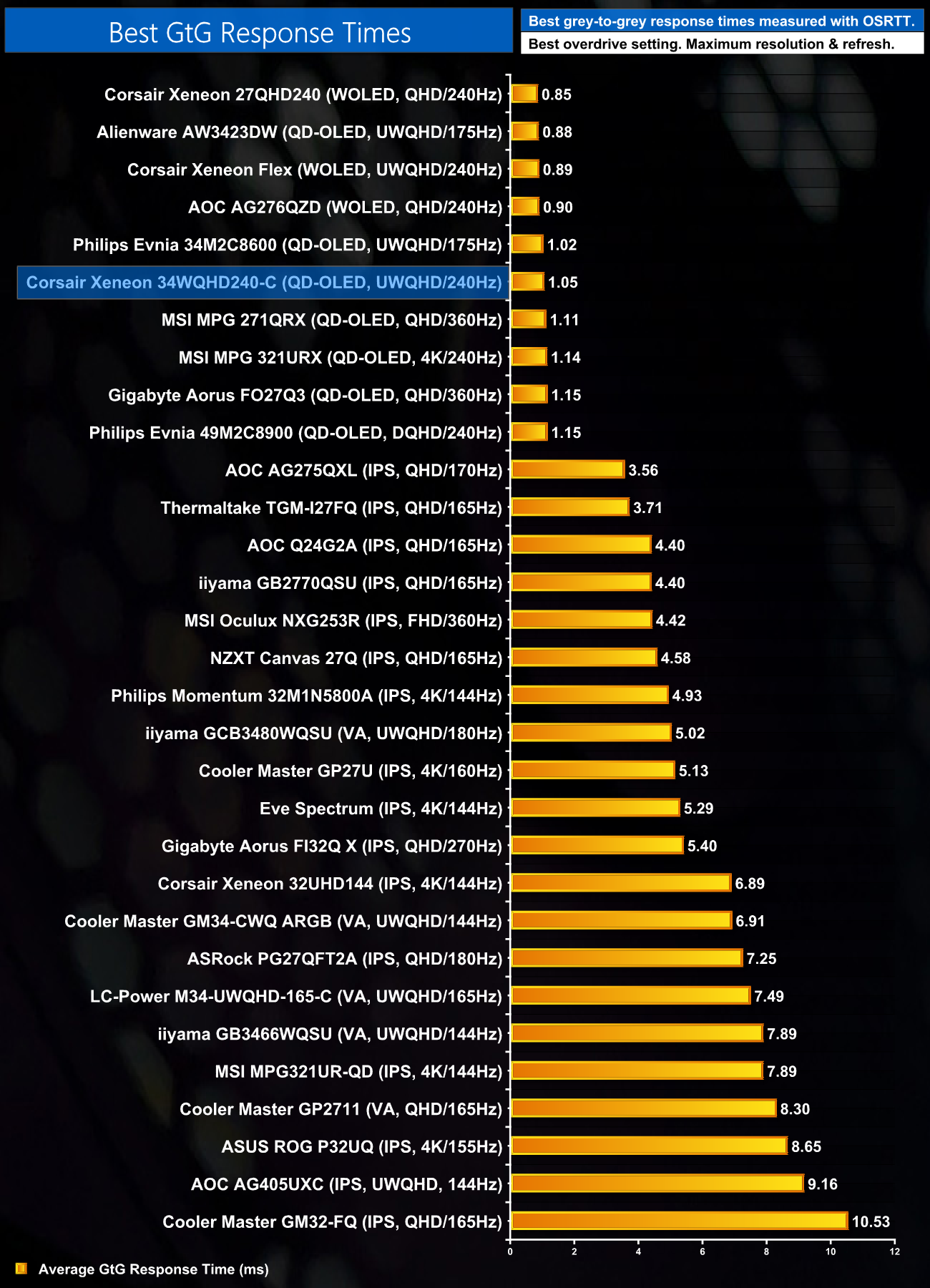Monitor response time testing is a new addition to our reviews, where we use the Open Source Response Time Tool (OSRTT), developed by TechTeamGB. This measures grey-to-grey response times and presents the results in a series of heatmaps, the style of which you may be familiar with from other reviews.
Initial Response Time is the time taken for the panel to transition from one colour to another, where lower values are better. We present the initial response time, so overshoot is not taken into account and is measured separately. We use a fixed RGB 5 tolerance for each transition.
Overshoot is the term given for when a monitor's transition exceeds or goes beyond its target value. So if a monitor was meant to transition from RGB 0 to RGB 55, but it hits RGB 60 before settling back down at RGB 55, that is overshoot. This is presented as RGB values in the heatmaps – i.e. how many RGB values past the intended target were measured.
Visual Response Rating is a metric designed to ‘score' a panel's visual performance, incorporating both response times and overdrive. Fast response times with little to no overshoot will score well, while slow response times or those with significant overshoot will score poorly.
I won't focus too much on response times here, as we know OLEDs deliver the best of the bunch regardless of refresh rate, and this Corsair is no different with an average response time right around the 1ms mark.
We get excellent motion clarity at 240Hz, too. I've compared it here against the performance at 175Hz, which is the other common refresh rate that a lot of ultrawide OLED monitors offer, including 1st gen products like the Alienware AW3423DW. As you can see, the different is not huge, but I'd say it's perceptible. Then again, would I upgrade from a 175Hz QD-OLED to a 240Hz? Probably not, but if you're in the market for a brand new model, it is something to factor in.
It's also worth remembering that other OLEDs can offer even higher refresh rates, though admittedly not in a 21:9 aspect ratio just yet. Still, versus the Gigabyte FO27Q3 which is a 1440p/360Hz model, there is another small but perceptible improvement to motion clarity at the higher refresh rate.
As expected, all the OLED monitors I've tested sit right at the top of the response time chart, all hovering around the 1ms mark.
 KitGuru KitGuru.net – Tech News | Hardware News | Hardware Reviews | IOS | Mobile | Gaming | Graphics Cards
KitGuru KitGuru.net – Tech News | Hardware News | Hardware Reviews | IOS | Mobile | Gaming | Graphics Cards






